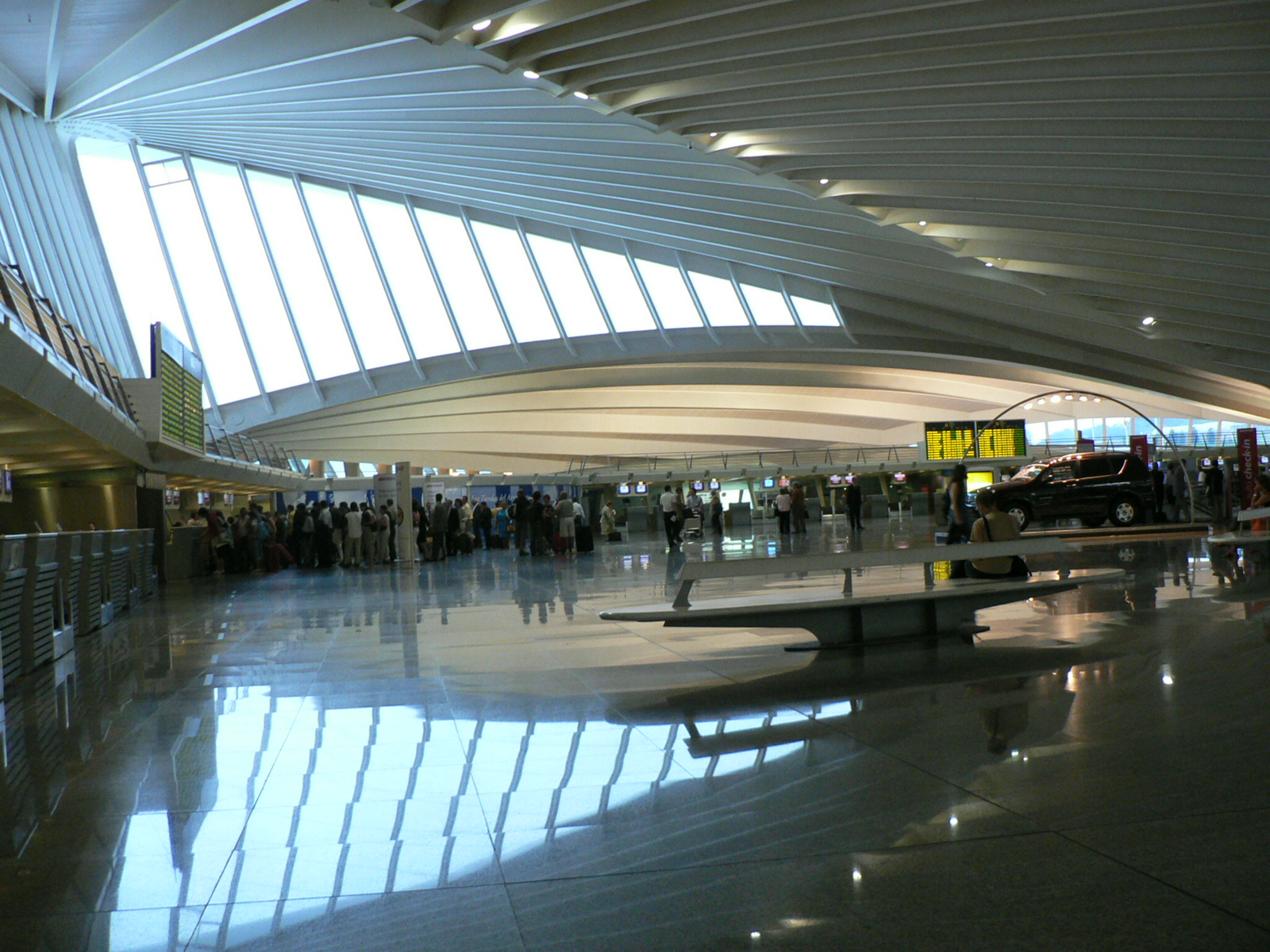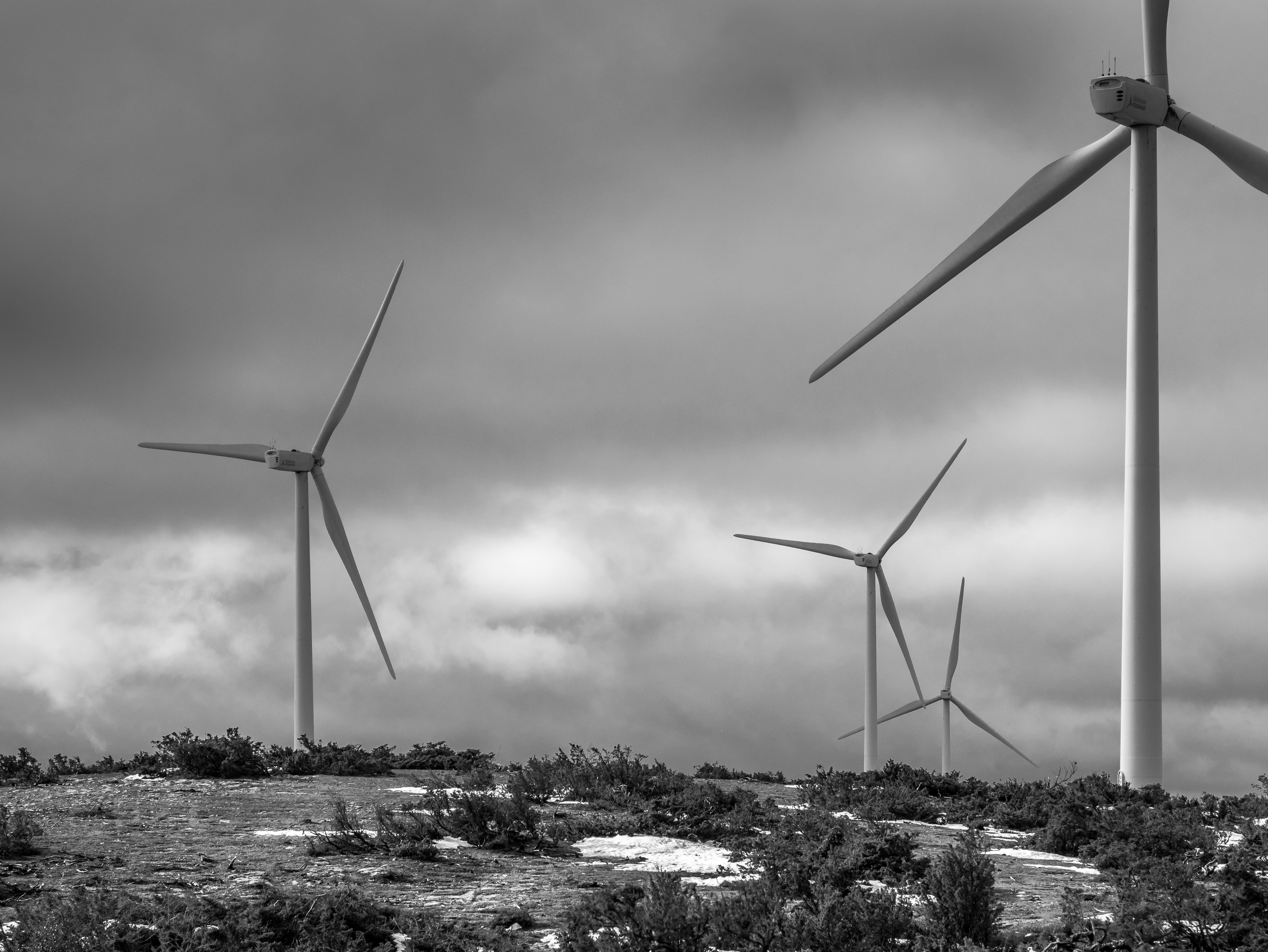|
Ferrocarriles Y Transportes Suburbanos
, commonly known by its acronym FTS, was a railway company in the Basque Country, Spain. Founded in 1947 as the merger of various railway companies, it operated several suburban rail lines in the Greater Bilbao area. FEVE took over its operations in 1972, which in 1982 were transferred to the new company Basque Railways. History FTS was founded in 1947 with the merger of two independent railways and two lines operated by another company: * Lutxana–Mungia railway, an independent company. * Bilbao–Lezama railway, an independent company. * Bilbao–Las Arenas–Plentzia railway and the Matico–Azbarren branch, operated by the Bilbao–Santander Railway Company. Aside from the railways, FTS also operated several tram and bus lines. The Bilbao–Plentzia line had been electrified since the 1920s, and shortly after the establishment of the new company the remaining non-electrified lines were electrified too. The rolling stock was renovated starting in the 1950s, but b ... [...More Info...] [...Related Items...] OR: [Wikipedia] [Google] [Baidu] |
Public Company
A public company is a company whose ownership is organized via shares of stock which are intended to be freely traded on a stock exchange or in over-the-counter markets. A public (publicly traded) company can be listed on a stock exchange (listed company), which facilitates the trade of shares, or not (unlisted public company). In some jurisdictions, public companies over a certain size must be listed on an exchange. In most cases, public companies are ''private'' enterprises in the ''private'' sector, and "public" emphasizes their reporting and trading on the public markets. Public companies are formed within the legal systems of particular states, and therefore have associations and formal designations which are distinct and separate in the polity in which they reside. In the United States, for example, a public company is usually a type of corporation (though a corporation need not be a public company), in the United Kingdom it is usually a public limited company (plc), i ... [...More Info...] [...Related Items...] OR: [Wikipedia] [Google] [Baidu] |
Bilbao Airport
Bilbao Airport is a minor international airport located north of Bilbao, in the municipality of Loiu, in Biscay. It is the largest airport in the Basque Country and northern Spain, with 5,469,453 passengers in 2018. It is famous for its new main terminal opened in 2000 designed by Santiago Calatrava. History After various aeronautic experiments in the province of Biscay, in October 1927 steps were taken by the ''Union of Public Works'' to establish an airport in Bilbao. A Provincial Board was created to study the possible location of the airport. It was not until 1936 that the ''General Aeronautics Management'' authorised the installation of an airport in Sondika. However, due to the site's many deficiencies, the airport was not considered of interest. Bilbao is surrounded by mountains and a flat valley without significant population had to be found. The construction works commenced during the Civil War but during this time and until June 1937 the airport was only used as a ... [...More Info...] [...Related Items...] OR: [Wikipedia] [Google] [Baidu] |
Ferrocarriles Vascongados
Ferrocarriles Vascongados was a railway company in the Basque Country, Spain; founded in 1906 as the merger of three railway companies. It operated the Bilbao-San Sebastián line, as well as the and the . FEVE took over its operations in 1972, which in 1982 were transferred to the new company Basque Railways. Ferrocarriles Vascongados was dissolved in 1995, after more than two decades without activity. History Ferrocarriles Vascongados was founded in 1906 with the merger of three different companies: * . It operated the Bilbao- line, opened in 1882; as well as the Durango-Elorrio branchline, opened in 1905. * . Its line, running from Durango to Zumarraga, opened in phases between 1887 and 1889. It also owned the San Pedro de Carquízano (Elgoibar) branch. * . Opened in phases between 1893 and 1901, it ran from Elgoibar to San Sebastián. Although the three companies were independent, they had numerous shareholders in common and overlapping interests. After long negotiatio ... [...More Info...] [...Related Items...] OR: [Wikipedia] [Google] [Baidu] |
Alstom
Alstom SA is a French multinational rolling stock manufacturer operating worldwide in rail transport markets, active in the fields of passenger transportation, signalling, and locomotives, with products including the AGV, TGV, Eurostar, Avelia and New Pendolino high-speed trains, in addition to suburban, regional and metro trains, and Citadis trams. Alsthom (originally Als-Thom) was formed by a merger between Compagnie Française Thomson-Houston and the electric engineering division of Société Alsacienne de Constructions Mécaniques in 1928. Significant later acquisitions included the Constructions Electriques de France (1932), shipbuilder Chantiers de l'Atlantique (1976), and parts of ACEC (Belgium, late-1980s). A merger with parts of the General Electric Company (UK) formed GEC Alsthom in 1989. Throughout the 1990s, the company expanded its holdings in the rail sector, via the acquisition of German rolling stock manufacturer Linke-Hofmann-Busch and Italian rail signall ... [...More Info...] [...Related Items...] OR: [Wikipedia] [Google] [Baidu] |
MD3 Azpeitia
id Tech 3, popularly known as the ''Quake III Arena'' engine, is a game engine developed by id Software for their video game '' Quake III Arena''. It has been adopted by numerous games. During its time, it competed with the Unreal Engine; both engines were widely licensed. While id Tech 3 is based on id Tech 2 engine, a large amount of the code was rewritten. Successor id Tech 4 was derived from id Tech 3, as was Infinity Ward's IW engine used in '' Call of Duty 2'' onwards. At QuakeCon 2005, John Carmack announced that the id Tech 3 source code would be released under the GNU General Public License v2.0 or later, and it was released on August 19, 2005. Originally distributed by id via FTP, the code can be downloaded from id's GitHub account. Features Graphics Unlike most other game engines released at the time — including its primary competitor, the Unreal Engine, id Tech 3 requires an OpenGL-compliant graphics accelerator to run. The engine does not inclu ... [...More Info...] [...Related Items...] OR: [Wikipedia] [Google] [Baidu] |
Alsthom Railcar (Ferrocarriles Vascongados And FTS)
Alstom SA is a French multinational rolling stock manufacturer operating worldwide in rail transport markets, active in the fields of passenger transportation, signalling, and locomotives, with products including the AGV, TGV, Eurostar, Avelia and New Pendolino high-speed trains, in addition to suburban, regional and metro trains, and Citadis trams. Alsthom (originally Als-Thom) was formed by a merger between Compagnie Française Thomson-Houston and the electric engineering division of Société Alsacienne de Constructions Mécaniques in 1928. Significant later acquisitions included the Constructions Electriques de France (1932), shipbuilder Chantiers de l'Atlantique (1976), and parts of ACEC (Belgium, late-1980s). A merger with parts of the General Electric Company (UK) formed GEC Alsthom in 1989. Throughout the 1990s, the company expanded its holdings in the rail sector, via the acquisition of German rolling stock manufacturer Linke-Hofmann-Busch and Italian rail signa ... [...More Info...] [...Related Items...] OR: [Wikipedia] [Google] [Baidu] |
Electric Multiple Unit
An electric multiple unit or EMU is a multiple-unit train consisting of self-propelled carriages using electricity as the motive power. An EMU requires no separate locomotive, as electric traction motors are incorporated within one or a number of the carriages. An EMU is usually formed of two or more semi-permanently coupled carriages, but electrically powered single-unit railcars are also generally classed as EMUs. The great majority of EMUs are passenger trains, but versions also exist for carrying mail. EMUs are popular on commuter and suburban rail networks around the world due to their fast acceleration and pollution-free operation. Being quieter than diesel multiple units (DMUs) and locomotive-hauled trains, EMUs can operate later at night and more frequently without disturbing nearby residents. In addition, tunnel design for EMU trains is simpler as no provision is needed for exhausting fumes, although retrofitting existing limited-clearance tunnels to accommodate the ... [...More Info...] [...Related Items...] OR: [Wikipedia] [Google] [Baidu] |
Azpeitia Station
, population_note = , population_density_km2 = auto , blank_name_sec1 = Official language(s) , blank_info_sec1 = , timezone = CET , utc_offset = +1 , timezone_DST = CEST , utc_offset_DST = +2 , postal_code_type = Postal code , postal_code = 20730 , area_code_type = Dialing code , area_code = , leader_title = Mayor , leader_name = Nagore Alkorta , leader_party = Bildu , website = , footnotes = Azpeitia (meaning 'down the rock' in Basque) is a town and municipality within the province of Gipuzkoa, in the Basque Country, Spain, located on the Urola river a few kilometres east of Azkoitia. Its population is 14,580 (as of 2014). It is located 41 kilometres southwest of Donostia/San Sebastián. Azpeitia is the birthplace of Ignatius of Loyola. The house of his birth is now preserved as ... [...More Info...] [...Related Items...] OR: [Wikipedia] [Google] [Baidu] |
Euskotren 3100 Series
Euskotren, formally known as Basque Railways ( eu, Eusko Trenbideak, es, Ferrocarriles Vascos), is a public railway company controlled by the Basque Government and officially established in 1982 to operate several narrow gauge railways inside the autonomous community of the Basque Country, under the terms of the Statute of Autonomy of the Basque Country. Originally operating under the commercial brand ''ET/FV'', it took control of the management and operations of the narrow gauge lines formerly operated by the railway company FEVE. The commercial brand eventually changed to ''Euskotren'', as it remains today. Since 2006, the infrastructure on which the company runs its trains has been owned by Euskal Trenbide Sarea. Divisions Euskotren operates several public transportation services; including commuter rail, inter-city rail, urban rail transit and public bus services as well as freight rail transport. Each of the transport services is operated under a global commercial ... [...More Info...] [...Related Items...] OR: [Wikipedia] [Google] [Baidu] |
Metro Bilbao (company)
Metro Bilbao is the company that runs lines 1 and 2 of the Bilbao metro. It is owned by the , itself dependent on the Basque Government and the . The ownership of the metro infrastructure is shared by the Biscay Transport Consortium and Euskal Trenbide Sarea. History Metro Bilbao, S.A. was established on 28 February 1993 with a capital of 10 million pesetas and the Biscay Transport Consortium as its only shareholder. The Basque narrow-gauge railway network in which the Bilbao metro has its origins (line 1 Line 1 or 1 line may refer to: Public transport Africa * Line 1 (Algiers Metro), Algeria * Cairo Metro Line 1, Egypt Asia China * Line 1 (Beijing Subway) * Line 1 (Changchun Rail Transit) * Line 1 (Changsha Metro) * Line 1 (Changzhou Metro) * L ... took over most of the existing Bilbao-Plentzia railway) had been managed by Basque Railways (known as Euskotren after 1996) since 1982. However, a separate company was established to manage the metro. The management of ... [...More Info...] [...Related Items...] OR: [Wikipedia] [Google] [Baidu] |
Railcar
A railcar (not to be confused with a railway car) is a self-propelled railway vehicle designed to transport passengers. The term "railcar" is usually used in reference to a train consisting of a single coach (carriage, car), with a driver's cab at one or both ends. Some railway companies, such as the Great Western, termed such vehicles "railmotors" (or "rail motors"). Self-propelled passenger vehicles also capable of hauling a train are, in technical rail usage, more usually called "rail motor coaches" or "motor cars" (not to be confused with the motor cars, otherwise known as automobiles, that operate on roads). The term is sometimes also used as an alternative name for the small types of multiple unit which consist of more than one coach. That is the general usage nowadays in Ireland when referring to any diesel multiple unit (DMU), or in some cases electric multiple unit (EMU). In North America the term "railcar" has a much broader sense and can be used (as an abbr ... [...More Info...] [...Related Items...] OR: [Wikipedia] [Google] [Baidu] |






.jpg)